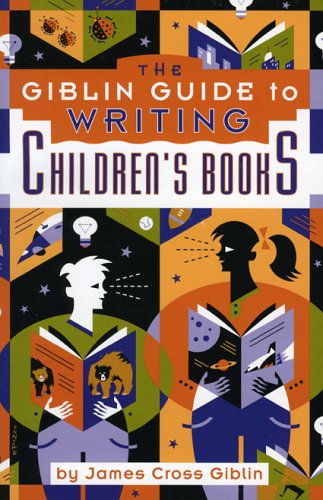Review of The Giblin Guide to Writing Children's Books (4th edition)
by James Cross Giblin
Contents
| Comments | To Buy
Purple
Crayon Bookstores
Book
Reviews Index Page

|
|
The Giblin Guide to Writing Children's Books first came out in 1990 and quickly became known as a good general guide to children's book writing. Jim was both the former editor-in-chief of Clarion Books and an award-winning author of children's nonfiction, and he drew on both of those experiences to write this book. I knew Jim, so there may be some bias in the comments that follow, but I don't think there is any doubt that with this latest revision, Jim's guide returned as a highly useful and relevant choice for anyone wanting to learn about writing for children.
Contents of The Giblin Guide to Writing Children's Books: A first chapter called "A Thriving Market" gives some facts about the children's book business today, but mostly covers the basics of getting started in writing. The real meat of the book follows: three chapters each on nonfiction, fiction (novels), and picture books. For each area, Jim both explains the types of books published in that area and gives concise how-to help for writing, studded with interesting examples. For example, in the fiction area he begins by looking at 10 "common failings in juvenile fiction," from his perspective as an editor, giving examples of each and explaining how to fix them. Then in "The Five Ages of Juvenile Fiction" he looks at easy readers, chapter books, middle-grade fiction, transitional fiction, and YA fiction. Last, he examines different types or genres of fiction, from mystery to multicultural. The book also includes a couple of chapters on submissions and the publishing process, followed by a list of books to read.
Here is some more detailed information about the nonfiction section of the book, for two reasons: most children's writing how-to's focus on novels and picture books, and Jim is known as a writer for his nonfiction. If nonfiction doesn't interest you, just skip ahead. Jim begins by looking at the nonfiction market, which has changed considerably in the past 20 years or so. He points out the greater importance of visuals and the need to write concisely. He then explores how to get ideas, shape your idea for the right age group, and write a proposal. In the second chapter, he provides a concise guide to the whole writing process, titled "Researching, Outlining, and Writing a Juvenile Nonfiction Book," which also includes tips for doing picture research. His third nonfiction chapter explores the importance of devices more common to fiction in nonfiction: an overall narrative line, strong openings, pacing, the use of anecdotes, and others.
Comments The Giblin Guide is a great introduction to writing for children. It covers the basics, and provides guidance in three different types of writing. I think Jim's experiences as an editor help make the guide even more useful, because his personal experiences aren't limited to what he he has done as a writer. He knows there may be more than one way to solve a writing problem, for example, and he points them out, such as in his discussion of whether or not to outline, and in how much detail. The part of the book dedicated to writing nonfiction is the best guide to this area I have seen. I do have a few quibbles. Perhaps because Jim's nonfiction has been published in the trade market only, he doesn't clearly differentiate trade nonfiction publishers from institutional publishers such as Lerner. He also does not look at the specific demands of the nonfiction picture book. But those are quibbles: most beginning writers will find the guidance they seek.
Who Needs The Giblin Guide to Writing Children's Books: Beginning writers, especially those writing in more than one area, will find this extremely useful. Nonfiction writers will also want this on their shelf. Writers already settled in novels and picture books may want to choose a more specific guide: for some possibilities, see my Writing How-To's, which I developed as a supplement to The C. I. Guide to Publishing Children's Books.
For more on James Cross Giblin, see this interview that he did with Roger Sutton of The Horn Book. For more about children's nonfiction, see this history of children's nonfiction in the US, written in 2013 by Jim, and my review of Anatomy of Nonfiction, a guide specifically focusing on writing NF for children.
Disclosure: I received a review copy of this book for free from the publisher, as do most reviewers.
Where and How to Purchase The Giblin Guide to Writing Children's Books:
- Buy The Giblin Guide to Writing Children's Books at Amazon.
- Buy The Giblin Guide to Writing Children's Books at Amazon Canada, if you live in Canada.
- Buy The Giblin Guide to Writing Children's Books at Amazon UK, if you live in Europe: much of the guidance crosses the Atlantic well, and it also provides help with writing for the American market.
You can, of course, also purchase this at any bookstore. If they don't have it in stock, they can order it for you.
This review is copyright © by Harold Underdown ( Google + Profile ). If you wish to reproduce it, please see the Terms of use. Last modified 4/26/2020.